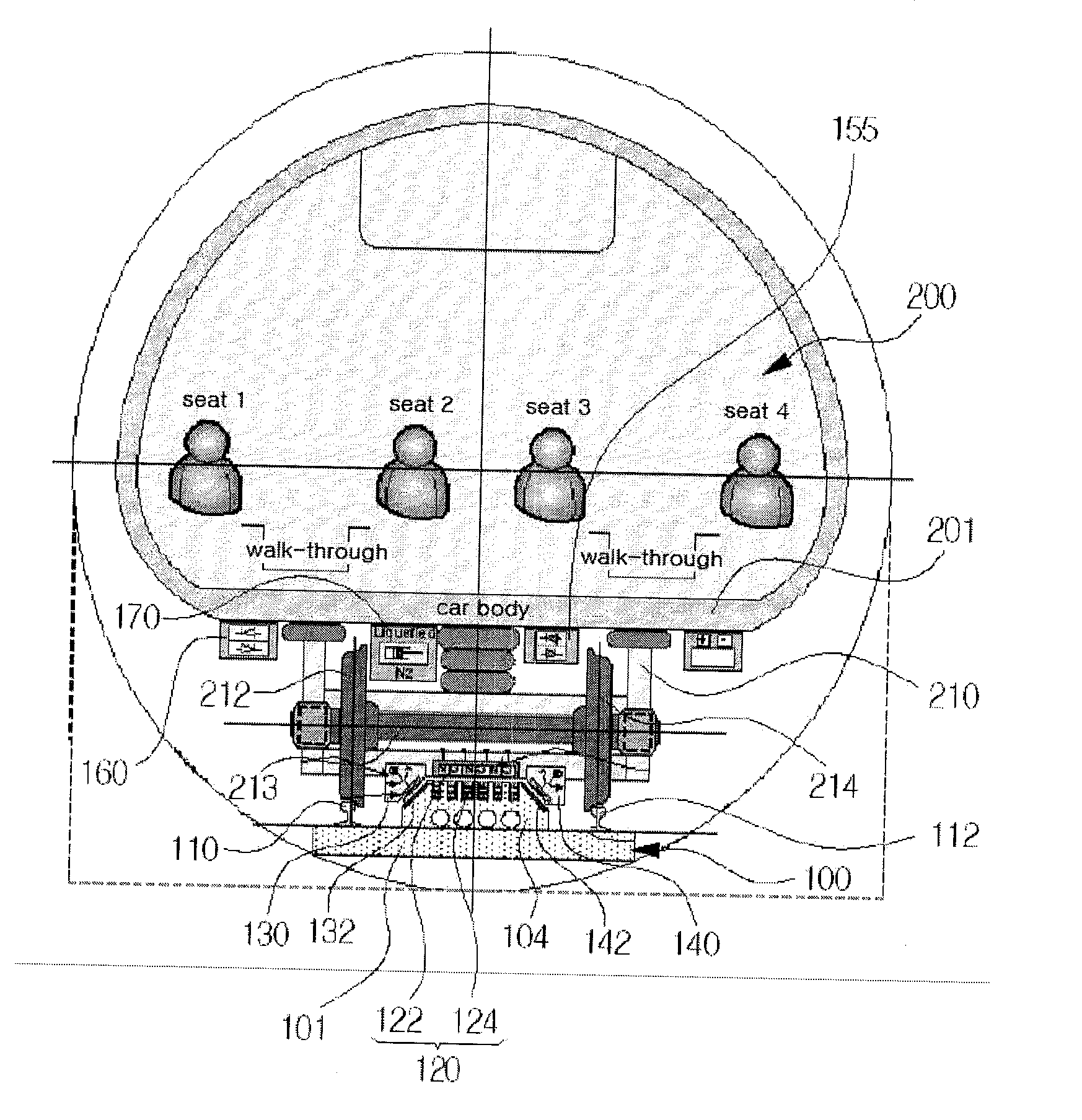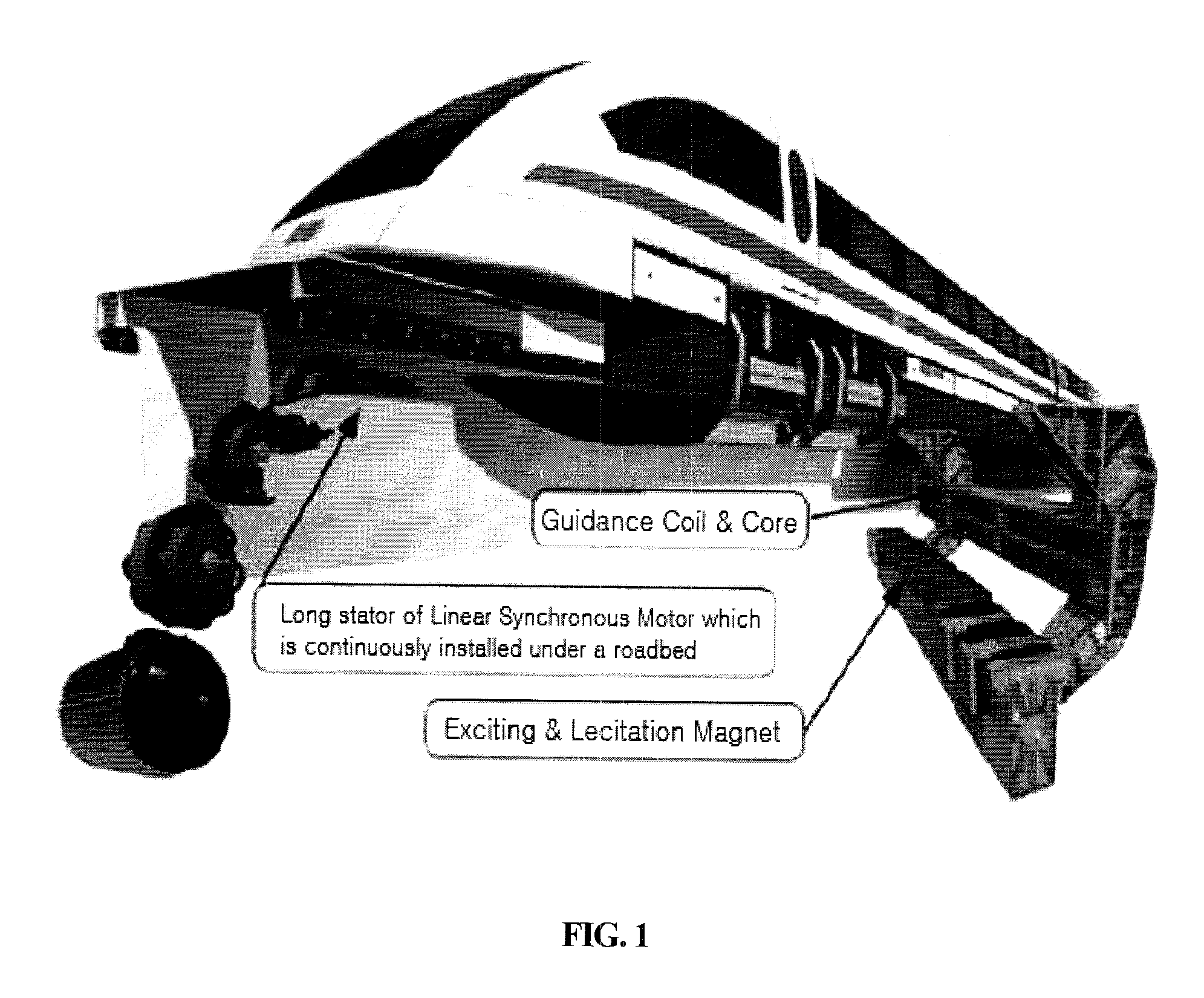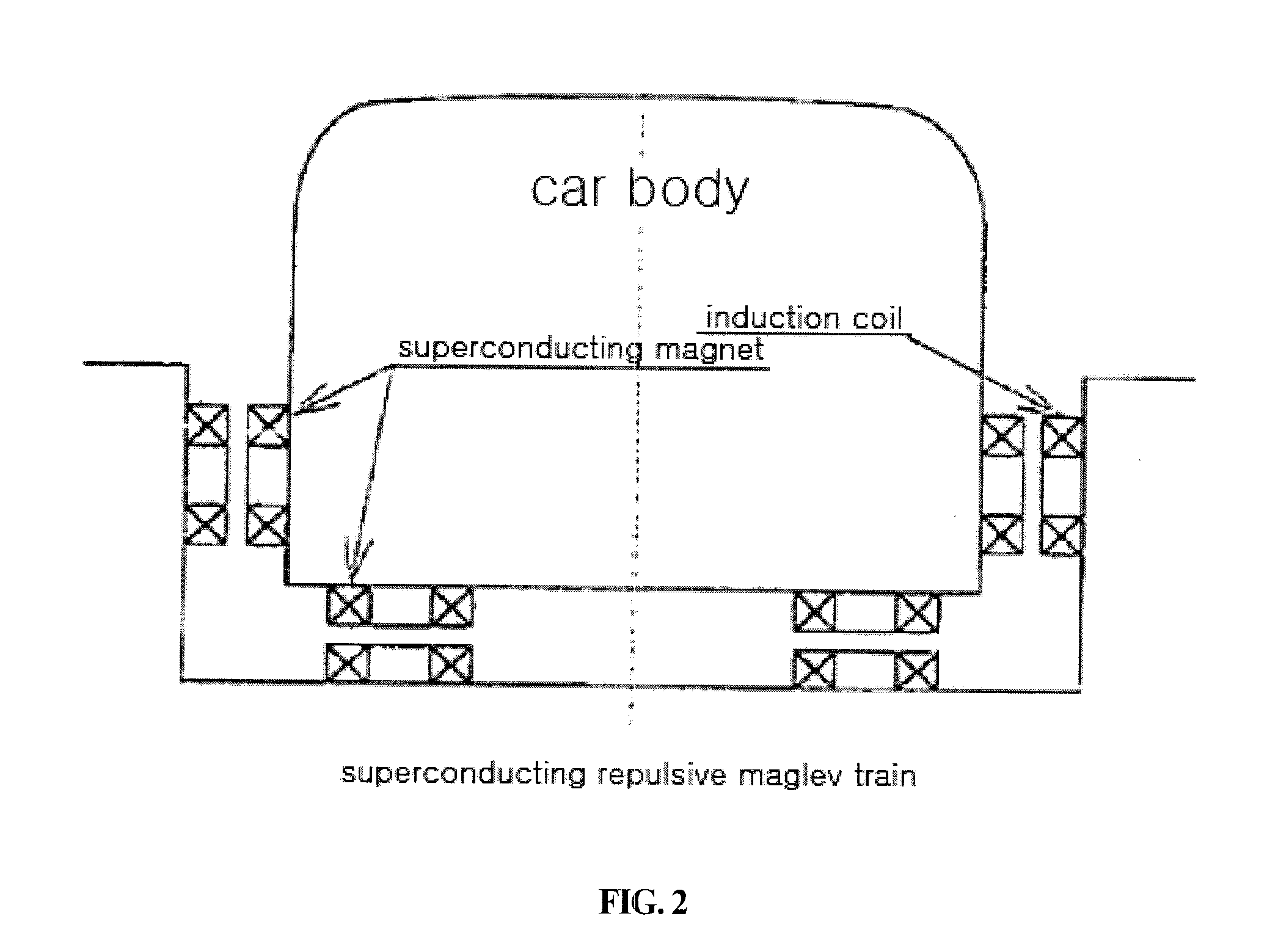Wheel-type ultra high speed railway system
a high-speed railway and wheel-type technology, applied in the direction of machinery control, process and machine control, etc., can solve the problems of high power consumption, reduced efficiency, large air gap between the primary and secondary sides of the linear propulsion motor, etc., and achieves convenient branching, stable traveling, and reduced efficiency
- Summary
- Abstract
- Description
- Claims
- Application Information
AI Technical Summary
Benefits of technology
Problems solved by technology
Method used
Image
Examples
Embodiment Construction
[0043]A wheel-type high-speed railway system according to the present invention will be described in detail below with reference to the accompanying drawings.
[0044]Here, FIG. 6 is a diagram illustrating the operating principle of a wheel-type high-speed railway system according to the present invention, FIG. 7 is a sectional view showing the railroad track of the present invention, FIG. 8 is a sectional view showing the straight section of the tube-type railroad track of the present invention, FIG. 9 is a sectional view showing the curved section of the tube-type railroad track of the present invention, FIG. 10 is a front view showing the principle parts of the vehicle of the present invention, FIG. 11 is a side view showing the principle parts of the vehicle of the present invention, FIG. 12 is a plan view showing the principle parts of the vehicle of the present invention, and FIG. 13 is a diagram illustrating the control of a vehicle in a turnout section according to the present ...
PUM
 Login to View More
Login to View More Abstract
Description
Claims
Application Information
 Login to View More
Login to View More - R&D
- Intellectual Property
- Life Sciences
- Materials
- Tech Scout
- Unparalleled Data Quality
- Higher Quality Content
- 60% Fewer Hallucinations
Browse by: Latest US Patents, China's latest patents, Technical Efficacy Thesaurus, Application Domain, Technology Topic, Popular Technical Reports.
© 2025 PatSnap. All rights reserved.Legal|Privacy policy|Modern Slavery Act Transparency Statement|Sitemap|About US| Contact US: help@patsnap.com



